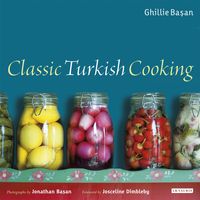Advertisement
Spices
Published 1995
Allspice, cinnamon, cumin and kırmızı biber are the leading spices of the Turkish kitchen. As the route of the early spice trade from China and India first entered eastern and then central Anatolia, the food of these areas began to incorporate a much heavier and more varied use of spices compared with the more restrained flavours of Istanbul. This adoption of new spices in Anatolian cooking and, later, in that of Istanbul, along with the arrival of chilli peppers from the New World, led to a number of spices being labelled yeni bahar, ‘new spice’: this could refer to paprika in Istanbul, to allspice in Antalya, or to coriander in Van. The traditional Turkish kitchen is incensed with spicy, sensual aromas considered sexually stimulating as well as beneficial to the digestion. The smell and taste of spices are believed to induce the appetite and to heighten the pleasure of the food. Whenever possible, spices should be bought in their seed, bark or fruit form and crushed or ground freshly when needed. This way, they retain their flavours longer than do the commercial powder forms. For a stronger, pungent flavour some spices are roasted by dry stir-frying in a heavy based pan over a high heat or by placing them on a tray in a hot oven.

